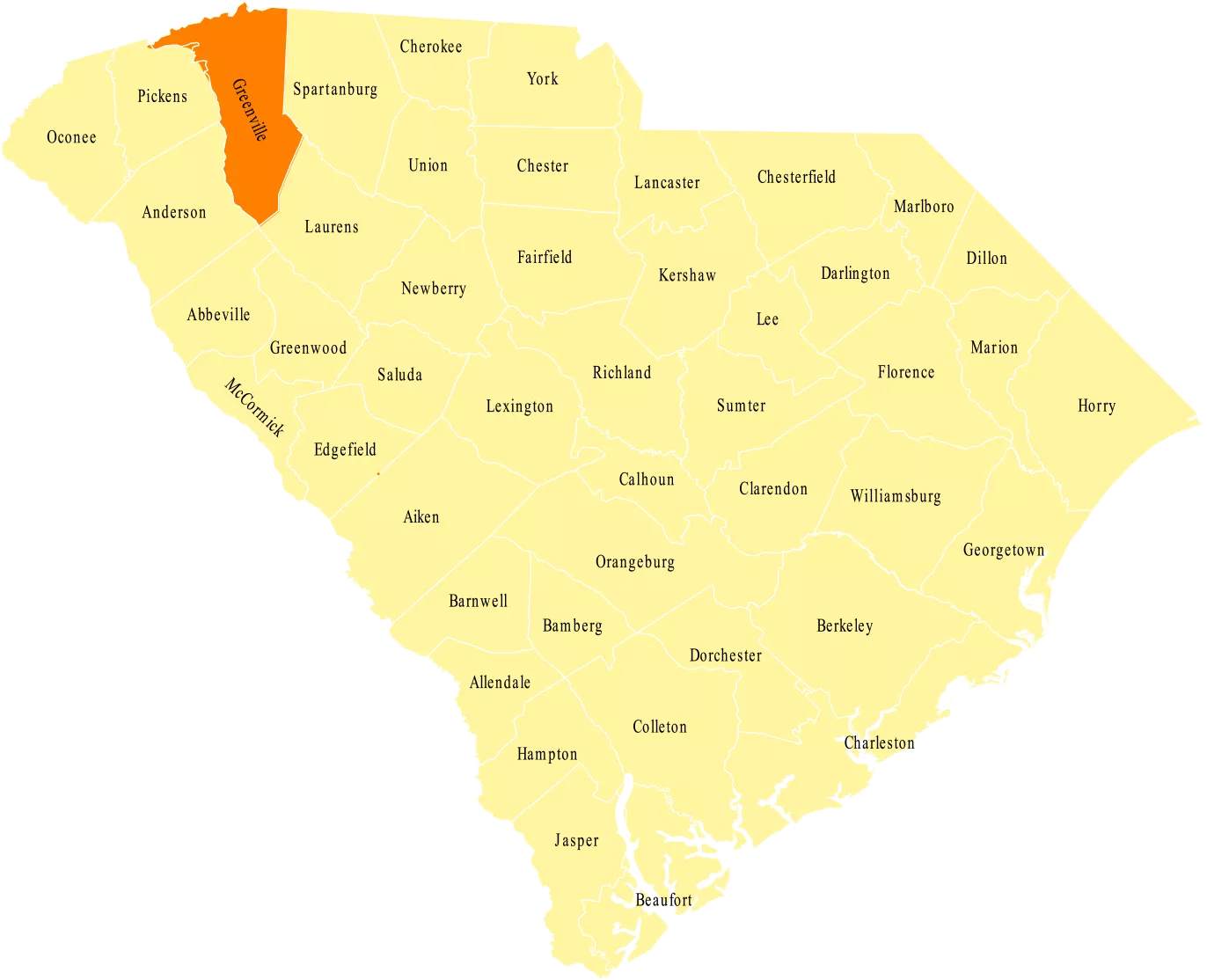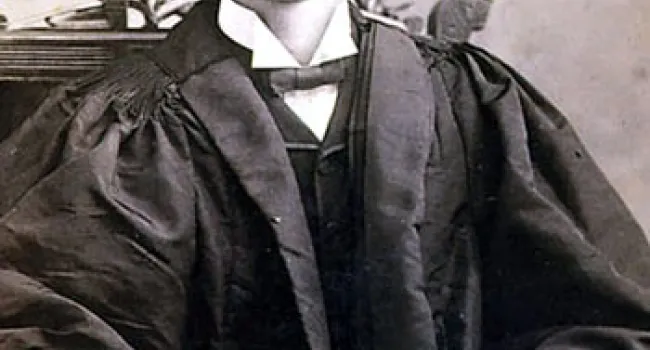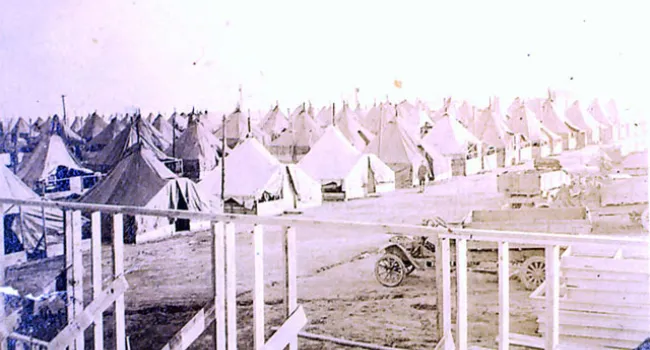
Photo
Perry D. Gilreath was elected Sheriff of Greenville County in 1877, a position he held until his retirement in 1900. He was particularly noted, in an era when many South Carolina politicians were...
Greenville County, South Carolina’s most populous county, lies in the Upstate. Two popular opinions exist on the origin of the name of Greenville County and its county seat: Revolutionary War general Nathanael Greene or area local Isaac Green.
Cherokee Indians lived in the area first, but they eventually gave up control of the land to South Carolina in a 1777 treaty. After the signing of this treaty, a fair number of Scotch-Irish and English settlers came to the region. Soon after, in 1786, Greenville District was founded. However, this district existed within the Washington District from 1791 to 1800.
Although historically a vacation area for coastal South Carolina planters, the county’s rivers powered the majority of the county’s early economy. The river gave rise to iron works, cotton mills, and Greenville’s textile industry. From the Reconstruction Era until the late 20th century, the textile industry defined Greenville County’s economy, at one point so much so that the county earned the title of “Textile Capital of the World.”
Modern Greenville County’s economy has transitioned away from textiles. Over the last few decades the county has been the answer for many corporations wondering where to relocate. Greenville County’s economy now centers around technology, manufacturing, engineering, and business.
History of Greenville County. Accessed June 03, 2016.
http://www.greenvillecounty.org/
South Carolina Counties by Population. Accessed June 08, 2016.
ttp://www.southcarolina-demographics.com/counties_by_population

Photo
Perry D. Gilreath was elected Sheriff of Greenville County in 1877, a position he held until his retirement in 1900. He was particularly noted, in an era when many South Carolina politicians were...
Video
This lesson is a brief survey of the art, architecture, literature and theatre of South Carolina. It opens with a series of skits where "comedic characters" "put down" South Carolina's interest in...
Photo
William Watts Ball (1868-1952) was the long-time editor of the Charleston "News and Courier." Born in Laurens County, he grew up during Reconstruction, and, according to legend, held Wade Hampton's...
Photo
Memorials to Vietnam War veterans, like this one in Greenville, were built after the war was over as part of the healing process that took place across the nation, as civilians and soldiers alike...
Photo
The April 12, 1945, death of Franklin D. Roosevelt at Warm Springs, Georgia, brought an outpouring of grief from the nation. Thousands of people flocked to watch his funeral train pass through the...
Photo
Victory in Europe was celebrated throughout the nation after four years of warfare. Although American forces were still fighting in Japan, the Greenville "News" headline illustrates the celebration...
Photo
School children in Greenville eat hot lunches prepared by WPA workers. Courtesy of the National Archives and Records Administration.
Photo
Many young men recruited into the army were trained at Camp Sevier, near Greenville. Motor Truck Companies 101 and 218 lived in this tent city. Courtesy of the South Caroliniana Library.
Photo
Recruits for the army that was raised to fight the Spanish-American War, begun in 1898 when the battleship "Maine" exploded in a Cuban harbor, were trained at Camp Wetherill near Greenville. This Army...
Photo
Postcard from Wm. H. Cobb and Co. 5 & 10 Cent Stores, Greenville. "Two South Carolina Products: A County Dispensary and Yoked Oxen as Motive Power." Ca. 1910. Courtesy of the South Caroliniana Library...